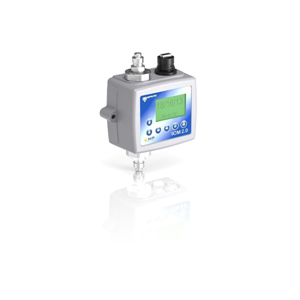Why measure oil cleanliness?
Oil cleanliness measurement is critical for reliable machinery performance. Oil is the lifeblood of every hydraulic and lubrication system - contamination from particles or water reduces component life and increases downtime. Regular oil cleanliness class monitoring (ISO 4406 / NAS / SAE) helps detect issues early, saving on repair costs and preventing unplanned stoppages.
Key benefits
- Prevent wear and avoid catastrophic failure
- Extend oil & component life
- Optimize filtration and maintenance schedules
- Demonstrable reports for audits and compliance
Standards we measure
- ISO 4406 — particles ≥4 µm, ≥6 µm, ≥14 µm (3-number code, e.g., 19/17/14)
- NAS 1638 — aerospace/military class 00–12
- SAE AS4059 — aerospace-adapted size bands
How we help
We provide portable and inline particle counters, aqua (water) sensors, offline filtration units, on-site sampling and analysis, and tailored maintenance recommendations. Reports include ISO/NAS codes, particle distribution, and remediation advice (filtration, dehydration, or oil change).
Typical deliverable: ISO-cleanliness report, particle-size distribution charts, recommended action plan and optional quotation for offline/online filtration or dehydration units.
FAQ
Measuring oil cleanliness helps prevent component wear, extend machine life, and avoid costly unplanned downtime caused by particle or water contamination.
Frequency depends on equipment usage and criticality. High-load or precision machines should be checked regularly to ensure consistent performance and protection.
Oil cleanliness is typically measured using standards such as ISO 4406, NAS 1638, and SAE AS4059, which assess particle counts and water contamination to evaluate oil condition.
Corrective actions may include offline filtration, dehydration, or complete replacement with high-quality oil. Recommendations are based on test results provided by Techknow Engineering Enterprise.
We provide on-site oil sampling and analysis, portable and inline particle counting, water detection, and offline filtration, along with detailed maintenance recommendations.
Our reports include ISO/NAS cleanliness codes, particle-size distribution charts, recommended action plans, and optional quotations for dehydration units or filters.
By detecting contamination early and optimizing filtration schedules, we prevent component wear, extend oil life, reduce unplanned maintenance, and improve overall system efficiency.
Customers can contact us via phone, email, or our website to arrange on-site testing, receive detailed cleanliness reports, and get tailored advice or quotations for corrective solutions.



